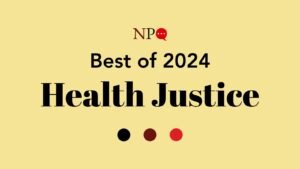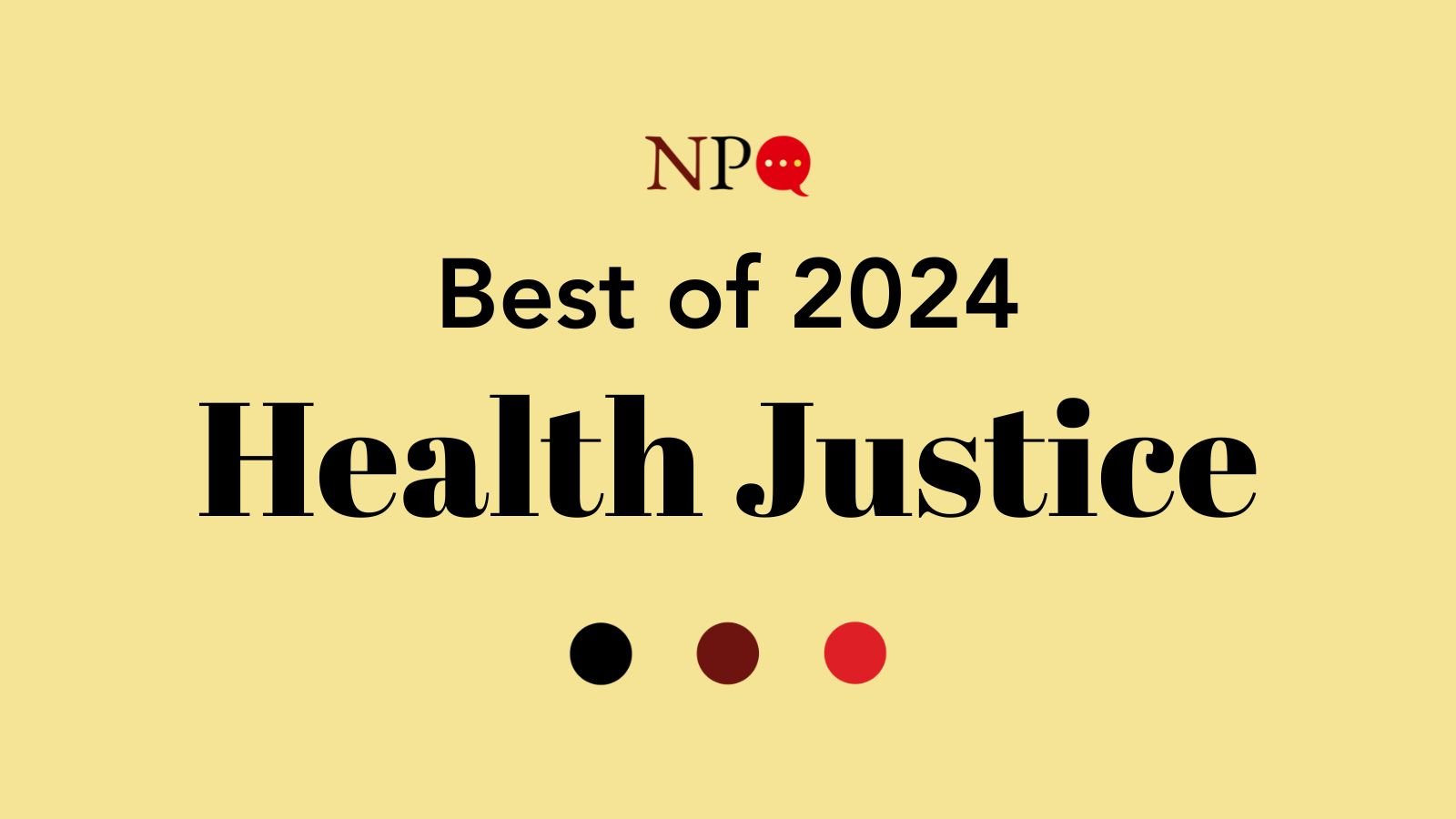
At Nonprofit Quarterly, one of the more important components of our vision of the nonprofit sector is its role as a stalwart defender of democracy. But we also view nonprofits as truth-tellers, as non-governmental observers that can push government to enact needed public policies and then monitor the implementation—and, when necessary, guide and call out government agencies when they have fallen flat. So take this as a complaint about the devolution of public policy implementation in the United States—and a call to arms, because the solution in part lies in an energetic public policy advocacy and the follow-through capacity of the nonprofit sector.
Three examples:
Central American Minors
Elise Foley’s article in the Huffington Post about the Central American Minors program offers some disturbing revelations about the gap between policy and implementation. In response to the surge of unaccompanied minors making the dangerous journey from Central American countries to the U.S., the Obama administration initiated the Central American Minors program, meant to allow immigrant parents in the U.S. to apply for their children to join them as opposed to risking their lives traveling alone through Mexico and then crossing the Mexico-U.S. border illegally. Children determined to be eligible to join their parents would be admitted as refugees (remember the violence these minors were facing in the countries they were trying to flee). If determined to be ineligible, some of the children could be admitted to the U.S. as humanitarian parolees, though without being able to get refugee benefits.
Foley reports that about 4,000 Central Americans have applied for assistance, but the U.S. government (the program is a joint responsibility of the State Department and the Department of Homeland Security) has interviewed only 90. Worse yet, most of the 90 have been determined to be eligible for assistance—12 percent for refugee status and 84 percent for humanitarian parole—but none have come to the U.S. so far. In other words, a year after the announcement and initiation of the program, the families that hoped to be reunited through the program have not seen any benefit. Foley says that immigration advocates called the yearlong delay “unconscionable.” Lavinia Limón, the president of the U.S. Committee for Refugees and Immigrants, told Foley that the delay was “pretty disgusting.”
“Nobody ever thought this was a panacea, but the fact that it hasn’t worked, it undermines any credibility the administration might have in terms of actually trying to address the concerns of those kids,” Limón said.
Consider this ludicrous situation. These kids are willing to risk their lives to escape violence in their home countries of El Salvador, Honduras, and others. But while State and Homeland Security go through their laborious review process—a prescreening interview, another interview, DNA testing to confirm parentage, security checks, medical clearance, and a formal agreement with the parents to repay the cost of their children’s travel—the kids have to remain in the countries where their lives are at risk. Bill Frelick, the refugee rights program director of Human Rights Watch, described the requirement that the children remain in the country their lives are in danger if they want to maintain eligibility for the CAM program “a fundamental contradiction.”
“If a gang is threatening your life and that’s the basis for your claim,” Frelick added, “then you don’t have the luxury of waiting in a country where the reason you qualify as a refugee is that someone is threatening your life and freedom and your government is unwilling or unable to protect you.”
Is this even a real program? Based on Frelick’s observation, it doesn’t add up. Eligibility is limited to parents who are in the U.S. legally; unaccompanied minors trying to join their parents in the U.S. who might not be fully documented immigrants could be out of luck. Eligibility requires the kids to stay in the country they come from, where their lives might be in danger, so if they’ve escaped murderous gangs by fleeing to Guatemala or Mexico, they are excluded. Eligibility is limited to those who go through the multiple State and Homeland Security reviews, obvious consuming many months, so the kids have to withstand continuing threats while waiting for decisions that are slow in coming.
Frelick described the CAM program to Foley as “politically driven,” aimed at dealing with the embarrassment of tens of thousands of young asylum-seekers coming to the U.S. border and overwhelming U.S. immigration officials and border police.
“How do I say this diplomatically? It’s not what it purports to be,” Frelick said.
The Benghazi Hearings
Having turned the tragedy of the deaths of the American ambassador to Libya, Chris Stevens, and three other Americans at the U.S. diplomatic mission in Benghazi into truly awful political theater aimed at catching former Secretary of State Hillary Clinton in a misstatement of facts, Republican members of Congress have entirely missed an important point, and Democrats in their defense of Clinton have done the same.
The criticism from American nonprofits of the U.S. invasion of Iraq that deposed Saddam Hussein, regardless of whether it was a good idea to invade Iraq at all, was that the U.S. had done little or no preparation for administering the nation it had defeated and now had to run. Post-invasion preparations were slim and usually off base. In the words of David C. Gompert, Bonny Lin, and Hans Binnendijk of the RAND Corporation describing the litany of blunders of the Bush administration’s invasion of Iraq, “the final flaw in the decision chain was the failure to prepare for a post-conflict occupation and stabilization program; that failing initially resulted in anarchy and then civil war.” The RAND researchers added this:
The post-invasion model in the minds of those who decided to invade was that Iraqis freed from Saddam’s despotic rule would work through a peaceful political process to create a unified, democratic and productive state that would serve as a model for others in the Arab world. The implication was that the demand for American occupation—troops, money, administration, and mediation—would be modest and brief…[They] had unjustifiable confidence in an unrealistic script—namely, that once Iraqi forces were defeated, Baghdad was taken, and Saddam was removed, fighting would subside, a democratic state would emerge, and increased oil production would produce ample revenues to rebuild and transform the country’s infrastructure and industry… The U.S. military was unprepared to deal with Sunni uprising, Shia violence, or Sunni-Shia warfare—let alone all three…The CPA (Coalition Provisional Authority) was understaffed for the post-invasion upheaval it had to try to manage—after all, no such upheaval was anticipated, or its possibility was denied, when the decision to invade was made.
It is almost too easy to substitute “Libya” for “Iraq” in the RAND analysis, except that the invasion was conducted from the air without U.S. troops on the ground. The tragedy of the death of four Americans in Benghazi, a tragedy to be sure, reflects the absolute chaos of Libya after the deposition of dictator Muammar Gaddafi. A RAND analysis of post-Gaddafi Libya reverberates with the image of post-invasion Iraq:
Since the 2011 overthrow of the Gaddafi regime, Libya’s path has been tumultuous. Despite a number of advantages compared with other post-conflict societies, progress on political, economic, and security fronts has fallen far behind, generating frustration and threatening the recovery altogether. Libya has teetered on the brink of a relapse into civil war on more than one occasion in the past year. In the absence of a functioning state, jihadist groups have made inroads. The broader Sahel and Maghreb regions, meanwhile, are becoming more and more fragile and southern Libya verges on becoming a safe haven for al Qaeda–linked groups recently chased from Mali by French military forces… In general, Libyan public administration is in very poor shape and capacity building is sorely needed to strengthen the state. Public confidence in the democratic political process has declined as frustration has mounted. In the absence of a national state, regional and tribal substate actors have strengthened and will likely seek to hold onto their entrenched power.
Sign up for our free newsletters
Subscribe to NPQ's newsletters to have our top stories delivered directly to your inbox.
By signing up, you agree to our privacy policy and terms of use, and to receive messages from NPQ and our partners.
From the start of the post-Gaddafi era, the preparations for governance and stability in Libya were an “eerie” replay of Iraq with no coherent plan for the aftermath. As put by Stephen Collinson of CNN,
Once, Libya seemed set to stand as a triumphant test case of Hillary Clinton’s vision on the smart application of U.S. power abroad. But the U.S.-led operation to avert genocide, which eventually led to the ouster of longtime dictator Moammar Gadhafi, left a political vacuum. It has since been exploited by groups like al Qaeda and ISIS that have identified lawless territory ripe for exploitation and a possible beachhead to launch terrorist attacks on Europe. And it has spawned a humanitarian crisis that has seen boatloads of refugees risk dangerous passage across the Mediterranean…When Gadhafi fell, he left a land of eviscerated political institutions ill-prepared for its sudden freedom…Torn by tribalism, ruled by two rival parliaments and with hundreds of civilians killed during the subsequent civil war, Libya is suffering a complete breakdown of political authority, which has spurred the rise of a host of terror groups.
This is a critique of the American invasion of Iraq that anti-war nonprofits honed and promoted, but the lesson seems to have escaped most U.S. legislators and policy makers, who seem obsessed with political “gotcha” questions. President Obama’s suggested of a question that should have been asked, “Do we have an answer for the day after?”, seems to have not been even minimally explored in Iraq and little more in Libya. While the politicians turn the Benghazi hearings into a political show, nonprofits should be asking the more fundamental questions that led to the vulnerability and death of Chris Stevens and his colleagues. Otherwise, between the decision to depose Gaddafi without U.S. troops on the ground and the death of Stevens at the Benghazi compound, it was more like the political show that Frelick says constitutes the implementation of the CAM program.
The Nonprofit Health Insurance CO-OPs
When the Obama administration gave in to Republicans and conservative Democrats to scotch the idea of the Affordable Care Act’s public option to compete with the big oligopolistic insurers, the alternative became support for nonprofit, consumer-oriented health insurers. They were all completely new start-ups, capitalized by relatively inflexible federal loans and hampered by restrictions in the products and markets they might test. Many of their initial enrollees were previously uninsured or underinsured, and those enrollees did what they were supposed to do—they went for medical treatments that they had previously put off or ignored because of their lack of health insurance coverage.
The result was that these new start-ups absorbed operating losses that were meant to be absorbed by the federal government’s Risk Corridor Payments program, in that the CO-OPs had taken on significant risk incumbent in their designated ACA policy function, to compete with the big insurers on price and service. Thanks to a surprise decision of the federal government to reimburse the CO-OPs for only 12.6 percent on the Risk Corridor Payments, the couple dozen nonprofit CO-OPs have been on the ropes, with at least eleven (given the news about Meritus Partners) having decided to go out of business—though in some instances, such as Colorado’s, it was a decision of the state government insurance oversight department, not the CO-OP’s.
Think about this dynamic: The fragile new CO-OP start-ups were created as a policy instrument as a substitute for a public health insurance entity to compete with the big insurers. They were underfunded and hamstrung from the start, and now a discretionary federal policy decision undermines their ability to fulfill their health insurance reform policy role. Was the federal government really serious about the CO-OPs, or was the support for the CO-OPs, as thin as it was, really “politically driven,” like Frelick’s description of the CAM program implementation?
Understand what the CO-OPs actually did in terms of health insurance policy despite the support they got—meager in the White House, almost none in Congress. Cynthia Cox of the Kaiser Family Foundation noted that the CO-OPs were often the least expensive or second-least-expensive insurance plans in the markets they operated, meaning that their closings will lead to higher costs for some consumers. Moreover, in Arizona and in several other cases of CO-OP closings, among the populations to be most seriously harmed were rural consumers, often actually reached by the nonprofit insurers as opposed to the big insurers and their often minimal rural outreach.
There are several levels of policy hypocrisy in the government approach to the CO-OPs and their ability to fulfill their roles as substitutes for a more robust “public option.” The CEO of the Colorado HealthOP, Julia Hutchins, believes the federal government “reneged” on its Risk Corridor Payments.
“The goalposts have been moved pretty dramatically in a very short period,” Hutchins added, referring to the federal government’s surprise funding decision. “If we’d known about this earlier, we could have planned for it and now we’re scrambling.”
If there is legitimate reason to wonder why the federal government would make a funding decision that effectively undermines its mechanism of creating competition for the likes of Cigna, Aetna, and Anthem, there is no shortage of justification to slam the hypocrisy of Republican legislators who have been doing almost all they could to take the legs out from under the Affordable Care Act and specifically the nonprofit CO-OPs. After the state’s decision to shut the Colorado CO-OP, Colorado Senator Cory Gardner (R-CO) called for an investigation of the Obama administration’s decision-making. A statement from Gardner explained, “This failure can be added to the very long list of Obamacare’s broken promises. Taxpayers are on the hook for millions of dollars in loans given out to the CO-OP, money that will likely never be repaid. The years since Obamacare’s passage have been marked by crisis after crisis in healthcare, and it’s far past time for a new plan.”
Gardner had actually been a 2013 co-sponsor a bill that would have eliminated the Risk Corridor Payment program entirely (S.1726 in 2013). Like other Republicans, Gardner was part of the cabal to make the CO-OPs unworkable from the start, as explained thoroughly by the Washington Post. Karen Davis, a professor of health policy management at the Johns Hopkins Bloomberg School of Public Health, explained that the CO-OPs were designed without “the support they need(ed) to thrive”: “One provision after another got stuck in there to limit their probability of success…It’s a little ironic to say you are for competition in the free market and then you don’t make it easy for new entrants.” As Colorado Pols wrote, “From Gardner’s support for throttling the co-ops during high-stakes budget negotiations to trying to kill the ‘risk corridor’ reimbursement program off completely, Gardner worked to bring to pass the very ‘crisis’ he claims to be upset about.”
Nonetheless, it doesn’t look like the Obama administration was all that willing to put its political and administrative muscle behind the nonprofit insurance CO-OPs. Its performance in supporting and promoting the CO-OPs has been underwhelming while the big insurers are getting bigger, merging, and frequently hiking their premiums. Were the CO-OPs simply political theater?
Nonprofit Relevance
Political scientists recall the 1973 book by Jeffrey L. Pressman and Aaron Wildavsky, Implementation: How Great Expectations in Washington Are Dashed in Oakland; Or, Why It’s Amazing that Federal Programs Work at All, This Being a Saga…Morals on a Foundation, Graham T. Allison’s 1971 Essence of Decision: Explaining the Cuban Missile Crisis, and the 1983 book Implementation and Public Policy by Daniel A. Mazmanian and Paul Sabatier—all focusing on understanding the implementation part of public policy. Has that been lost? Are we simply so focused on scoring policy victories that we give scant attention to whether the policies are being implemented competently—or at all?
This is a role for nonprofit watchdogs. Nonprofits have to call out the White House when its announced response to the flow of unaccompanied Central American minors leaves the bulk of these children vulnerable and without timely assistance, when the U.S. repeats the blunders of Iraq with similar blunders in Libya, and when a core provision of the Affordable Care Act is carried out with a palpable lack of commitment in several parts of government. The public policy role of nonprofits should be more than advocacy for legislative and regulatory enactment. It must be to expose political theater and hold government truly accountable for learning the lessons of past experience and carrying out needed programs and policies.
Now, the American voter is faced with the beginning of the nearly interminable presidential campaign. Some of the candidates seem to be infused with policy promises that are just about imaginary in their conception and nonsensical in their potential implementation. If nonprofits in their nonpartisan way are going to hold the politicians to some version of reality, they should be grilling the candidates at candidate speeches and forums to ask not just whether they (heart) nonprofits and not just whether they support this prospective policy or that, but what they will do to make programs that should work actually do what they are meant to do. Otherwise, our political system will continue to decline into acting for political expediency, with the mistakes of the past repeated and deepened in the future.












